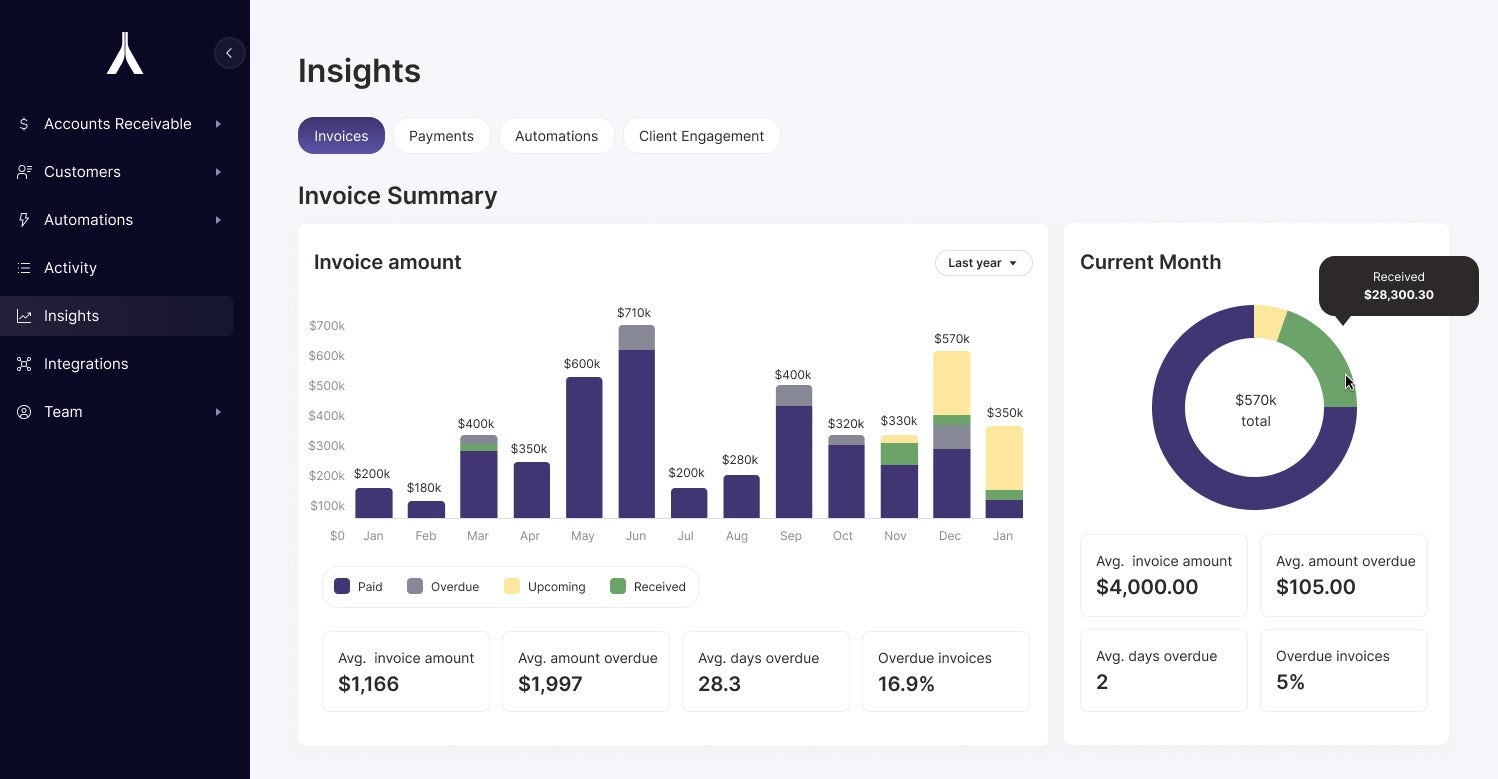Every business relies on a steady inflow of revenue to sustain its operations and drive growth. The accounts receivable function plays a vital role in ensuring timely payments from customers, maintaining healthy cash flow, and safeguarding the financial stability of the organization. To achieve these objectives efficiently, accounts receivable teams must harness the power of data and insights. We explore why data is essential for accounts receivable, and how leveraging insights can help businesses better manage their finances and improve overall performance.
Overview of Accounts Receivable & Accounts Receivable Payment Processing
Accounts receivable is responsible for managing the money owed to a business by its customers or clients. When goods or services are delivered, invoices are generated, specifying the amount due and the payment terms. The accounts receivable team is then tasked with tracking these outstanding invoices and collecting payments within the agreed-upon timeframes. The following summarizes why Accounts Receivable data is business critical:
1. Payment Trends and Patterns
Data and insights provide a comprehensive view of payment trends and patterns. By analyzing historical payment data, the accounts receivable team can identify customers who consistently pay on time, those who frequently delay payments, and others who struggle to meet their financial obligations. This knowledge helps in devising targeted collection strategies, enabling the team to allocate resources efficiently and focus efforts where they are most needed.

2. Optimizing Collection Strategies
Collection strategies are crucial to improving cash flow. Data-driven insights allow the accounts receivable team to segment customers based on their payment behaviors and prioritize follow-ups accordingly. For example, high-value customers with a history of timely payments may receive less frequent reminders, while those who have been tardy in settling their dues receive more proactive communication.
3. Early Detection of Payment Issues
Early detection of payment issues can prevent potential losses and protect the business from bad debts. By monitoring payment trends, the accounts receivable team can identify customers whose payment frequency has decreased, indicating possible financial difficulties. Prompt intervention, such as negotiating payment plans or offering flexible options, can help retain the customer and prevent default.

4. Cash Flow Management
Data analysis enables accurate cash flow projections. With a clear understanding of expected payments, the finance team can anticipate revenue inflows and plan for expenses, investments, and business expansion effectively. This proactive approach to cash flow management enhances the company’s financial stability and reduces the risk of cash shortages.
5. Enhancing Customer Relationships
A well-managed accounts receivable process positively impacts customer relationships. By addressing payment issues promptly and professionally, businesses demonstrate their commitment to customer satisfaction. Flexible payment options and incentives for early payments can also foster goodwill and loyalty. This is interwoven with the ability to provide customers a seamless checkout experience, allowing them to monitor. According to PYMNTS, Online Retailers May Lose Half of Sales to Checkout Friction.
6. Data-Driven Decision Making
Data and insights support informed decision-making. By analyzing key metrics such as Days Sales Outstanding (DSO), Collection Effectiveness Index (CEI), and aging reports, businesses can fine-tune credit policies, sales terms, and risk management practices. These data-driven decisions strike the right balance between maximizing revenue and minimizing credit risks.
7. Process Improvement
Regular analysis of accounts receivable data can reveal inefficiencies and bottlenecks in the billing and collection processes. Streamlining these processes leads to reduced administrative costs, faster payment cycles, and enhanced operational efficiency.
8. Performance Evaluation
Quantifiable metrics from data analysis allow businesses to evaluate the performance of the accounts receivable team objectively. Setting performance targets based on real-time insights and providing constructive feedback can motivate employees and improve overall team efficiency.
Conclusion
Data and insights are invaluable assets for the accounts receivable function in any business. Leveraging this information allows the team to optimize collection strategies, improve cash flow management, enhance customer relationships, and make informed decisions that positively impact the company’s financial health and success. By embracing data-driven practices, businesses can not only strengthen their accounts receivable process but also foster a culture of continuous improvement and financial excellence.
Remember, data-driven decision-making is an ongoing process. Regularly analyzing accounts receivable data, updating collection strategies, and adapting to changing customer behavior will help businesses maintain a healthy financial position and stay competitive in their respective markets.



